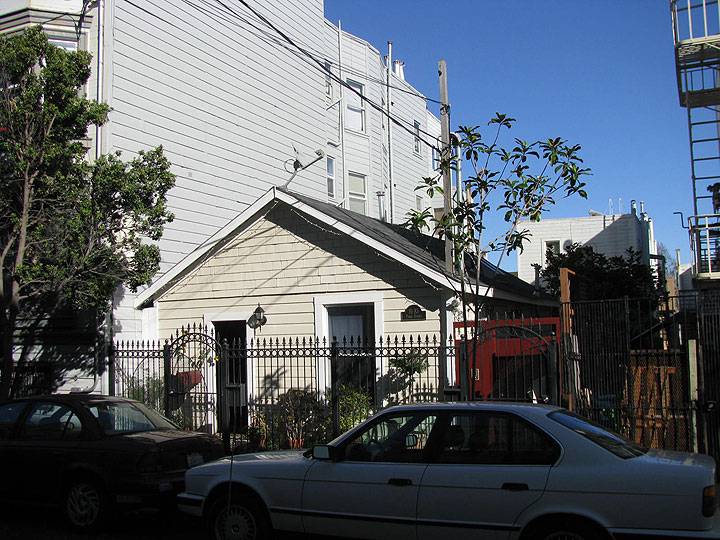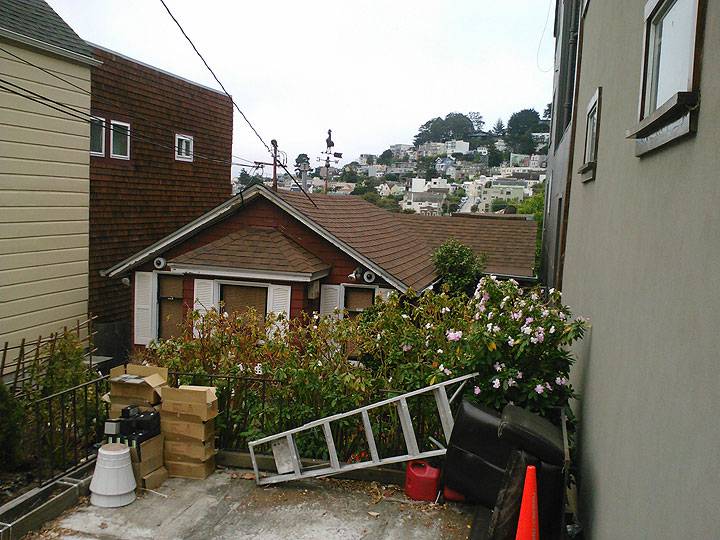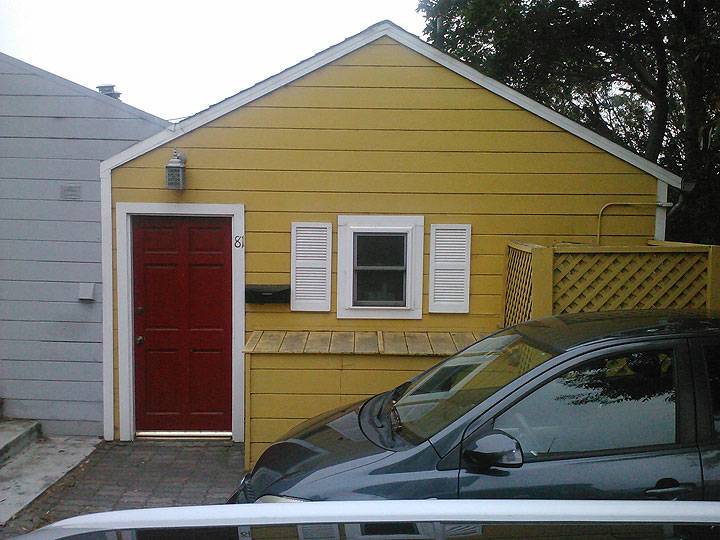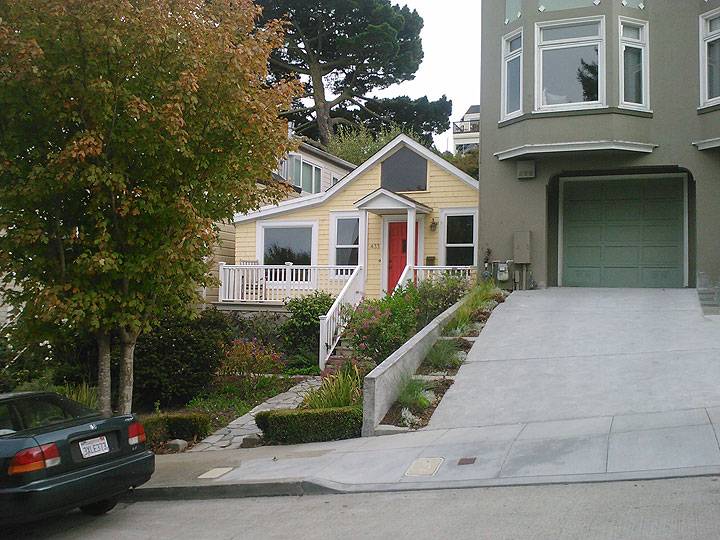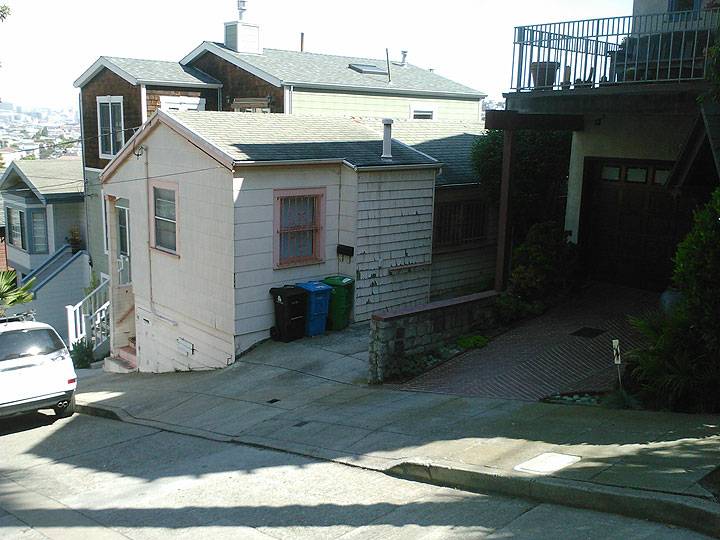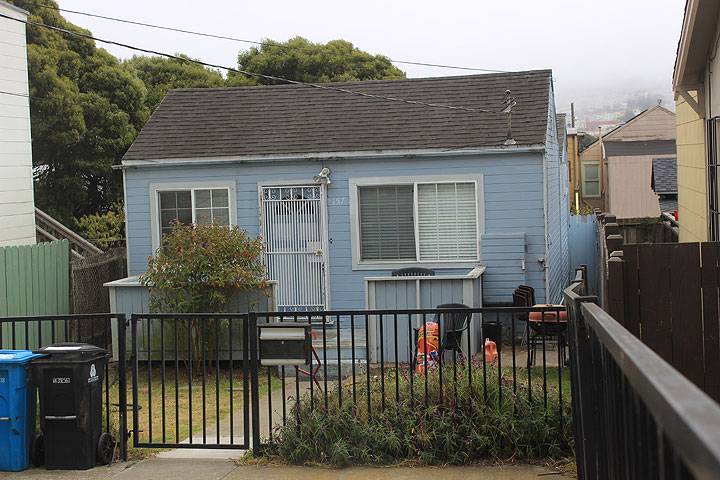1906 Earthquake Shack Survivors: Difference between revisions
(Created page with "'''<font face = arial light> <font color = maroon> <font size = 3>Unfinished History</font></font> </font>''' coming! category:1900s category:Earthquakes category...") |
No edit summary |
||
| Line 1: | Line 1: | ||
'''<font face = arial light> <font color = maroon> <font size = 3>Unfinished History</font></font> </font>''' | '''<font face = arial light> <font color = maroon> <font size = 3>Unfinished History</font></font> </font>''' | ||
[[Image:Quake-shack-pearl-street 5320.jpg]] | |||
'''Surviving quake shack on Pearl Street between Duboce and Market.''' | |||
[[category:1900s]] [[category:Earthquakes]] [[category:buildings]] [[category:2000s]] [[category:Housing]] [[category:1906]] | ''Photo: Chris Carlsson'' | ||
Earthquake shacks, the FEMA trailers of their day, were originally built and distributed in the wake of the 1906 earthquake and fire. John Baranski describes how they came to be in his ''Housing the City by the Bay: Tenant Activism, Civil Rights, and Class Politics in San Francisco'' (Stanford University Press: 2019): | |||
<blockquote>[After the 1906 quake], Dr. Edward T. Devine, a New Yorker sent to San Francisco by the American Red Cross and member of the Finance Committee… called for the establishment of a nonprofit public corporation with the power to build, sell, and rent permanent housing. The housing would be not just for the usual long-term dependents of city government—such as the aged, infirm, and invalid—but also for workers who did not earn enough money to rent or buy their own homes. He recommended using $3 to $4 million of the committee’s money for housing. His program was designed to put money into circulation, create jobs, and make housing for residents who might otherwise leave for want of shelter. Inherent in Devine’s program was the conviction that public agencies should provide model homes and communities. | |||
In the end, Devine’s plan for permanent projects was reduced to 5,610 temporary cottages and 19 two-story tenements for sale to the private sector. Demand for the cottages was “enormous,” according to the Red Cross, and many of the 17,000 residents housed in these buildings across the city regarded them as better than the pre-quake housing. By the summer of 1907, the tenants were given a choice: Either purchase and move the dwellings to individual lots or be forcibly removed by city park authorities. As thousands of families were forced back into the private housing market, the city’s first experiment with nonspeculative, social housing came to an end. </blockquote> | |||
[[Image:Quake-shack-369-Valley-St.jpg]] | |||
'''369 Valley Street.''' | |||
''Photo: Chris Carlsson'' | |||
[[Image:Quake-shack-81-Mayflower 211.jpg]] | |||
'''81 Mayflower Street.''' | |||
''Photo: Chris Carlsson'' | |||
[[Image:Quake-shack-adapted-433-Liberty-or-Cumberland-212.jpg]] | |||
'''433 Liberty Street: is this a quake shack that was built on and extended?''' | |||
''Photo: Chris Carlsson'' | |||
[[Image:Quake-shack-candidate-21st-street-213.jpg]] | |||
'''Possible shack on 21st Street.''' | |||
''Photo: Chris Carlsson'' | |||
[[Image:157-Lobos-Street-might-be-double-quake-shacks 2829.jpg]] | |||
'''157 Lobos Street, might be double-quake shacks.''' | |||
''Photo: Chris Carlsson'' | |||
[[category:1900s]] [[category:Earthquakes]] [[category:buildings]] [[category:2000s]] [[category:Housing]] [[category:1906]] [[category:Noe Valley]] [[category:Castro]] [[category:hills]] [[category:OMI/Ingleside]] | |||
Revision as of 21:15, 4 June 2020
Unfinished History
Surviving quake shack on Pearl Street between Duboce and Market.
Photo: Chris Carlsson
Earthquake shacks, the FEMA trailers of their day, were originally built and distributed in the wake of the 1906 earthquake and fire. John Baranski describes how they came to be in his Housing the City by the Bay: Tenant Activism, Civil Rights, and Class Politics in San Francisco (Stanford University Press: 2019):
[After the 1906 quake], Dr. Edward T. Devine, a New Yorker sent to San Francisco by the American Red Cross and member of the Finance Committee… called for the establishment of a nonprofit public corporation with the power to build, sell, and rent permanent housing. The housing would be not just for the usual long-term dependents of city government—such as the aged, infirm, and invalid—but also for workers who did not earn enough money to rent or buy their own homes. He recommended using $3 to $4 million of the committee’s money for housing. His program was designed to put money into circulation, create jobs, and make housing for residents who might otherwise leave for want of shelter. Inherent in Devine’s program was the conviction that public agencies should provide model homes and communities. In the end, Devine’s plan for permanent projects was reduced to 5,610 temporary cottages and 19 two-story tenements for sale to the private sector. Demand for the cottages was “enormous,” according to the Red Cross, and many of the 17,000 residents housed in these buildings across the city regarded them as better than the pre-quake housing. By the summer of 1907, the tenants were given a choice: Either purchase and move the dwellings to individual lots or be forcibly removed by city park authorities. As thousands of families were forced back into the private housing market, the city’s first experiment with nonspeculative, social housing came to an end.
369 Valley Street.
Photo: Chris Carlsson
81 Mayflower Street.
Photo: Chris Carlsson
433 Liberty Street: is this a quake shack that was built on and extended?
Photo: Chris Carlsson
Possible shack on 21st Street.
Photo: Chris Carlsson
157 Lobos Street, might be double-quake shacks.
Photo: Chris Carlsson

